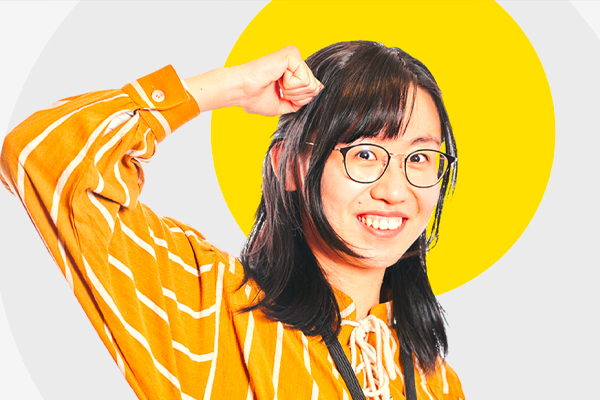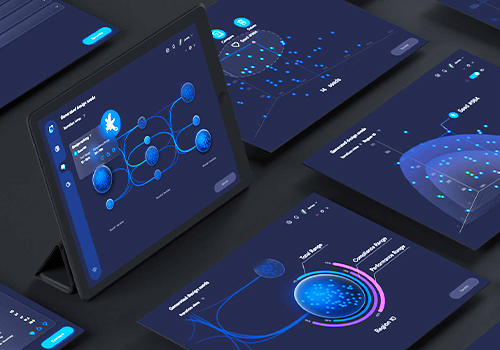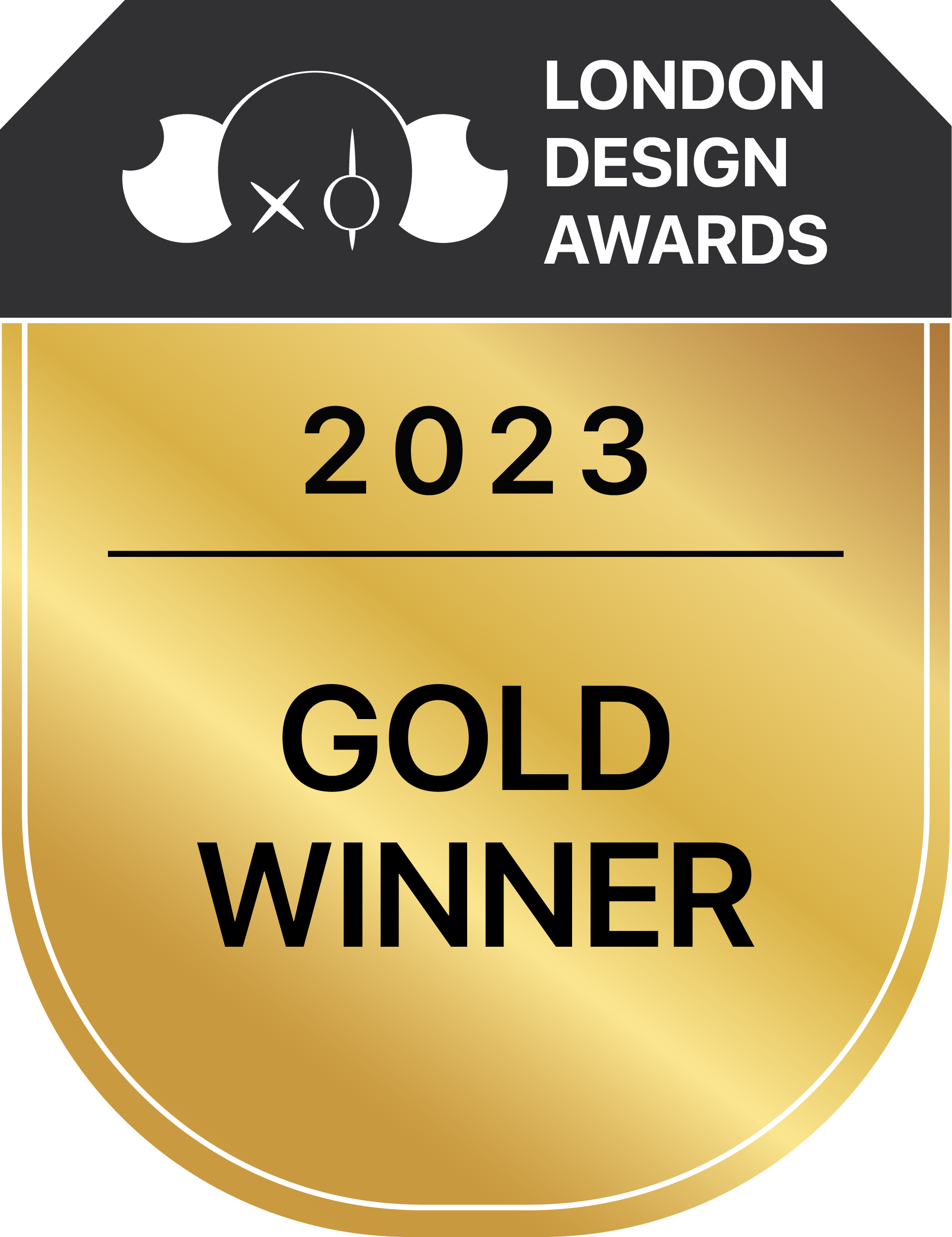
Yunsheng Zhou
1. Please give us a brief bio of yourself and your design background.
Hello there, I'm Yunsheng Zhou, but you might also know me as Inken. My journey as a designer is fueled by a deep-seated passion for creating experiences that resonate with joy and engagement.
2. What made you become/why did you choose to become a designer/artist?
I chose to become a designer driven by my fascination with solving problems in creative and context-specific ways. Design for me is not just about creating something visually appealing; it's about finding innovative solutions to real-world challenges. The constant process of thinking, analyzing, and creating solutions that are not only effective but also enhance everyday experiences deeply resonated with me.
3. Tell us more about your agency/company, job profile, and what you do.
My project "OiT - One in Thousands" is a solo passion project by myself. I dedicate myself to crafting designs that not only meet but exceed user expectations. Outside the confines of my professional life, I embrace my creative spirit as an indie game developer. This pursuit has led me to design and develop over 10 unique games, each a testament to my commitment to creativity and innovation in interactive entertainment.
4. What does “design” mean to you?
For me, design is not just a profession; it's a mindset that permeates every minute of my life. It's a lens through which I view and interact with the world around me. Whether I'm in the kitchen experimenting with new ways to streamline my cooking process or reimagining the layout of my living space for optimal functionality and aesthetics, design thinking guides my approach. Design, in its essence, is about problem-solving and improvement, and for me, it transcends professional boundaries. It means taking the principles I've honed in my career and applying them broadly, transforming everyday experiences into well-crafted moments, and elevating routine thinking to the level of a large, dynamic platform.
5. What’s your favorite kind of design and why?
I am most drawn to designs that effortlessly merge practicality with creativity, particularly in areas where design is often overlooked. I'm passionate about elevating everyday life with innovative and effective solutions. This kind of design, which transforms the mundane into the extraordinary through creative problem-solving, truly captivates me.
6. To you, what makes a “good” design?
Defining 'good design' is complex : ) From my perspective, the essence of good design isn't found in universal standards or aesthetic benchmarks, but rather in its context-specific effectiveness. Those context-specific solution is adaptive and empathetic. It involves a deep understanding of the user's needs, the environment in which the design will function, and the problems it aims to solve. It's a process of marrying form with function in a way that feels both intuitive and innovative. The true measure of good design, therefore, lies in its ability to resonate with its intended audience, to solve problems seamlessly, and to enhance the user experience in meaningful ways.
7. How did you come up with the idea for your award-winning design?
I caught up with the idea from researching the most popular domain - Gen AI and Machine learning. They grows fast and plays a crucial role in improving efficiency and reducing the repeated working load in our daily lives. In the Architecture and Engineering area, AI is widely used in generative design. Generative design is a design exploration process. The software explores all the possible permutations of a solution, quickly generating design alternatives. However, the problem is that the intelligence systems can generate thousands of solutions that difficult for users to distill. This situation even reduces the efficiency of the working flow.
8. What was your main source of inspiration for this design?
Through the research including interview with expertise and conducting user interviews to understand the current workflow of generative design, the working scenario when using the generative design is: user define certain constraints and design goals; then they input the metrics and requirements, the intelligence system will generate a certain number of outputs (usually thousands), users will select specific output from them. The problem in this scenario is that the intelligence system can generate thousands of extremely difficult outcomes for users to distill. As a result, users need to select from thousands of solutions, which takes much time and even reduces the working flow efficiency. To solve the problem, I designed an iPad-based application data visualization dashboard that helps users with decision-making through objective and subjective sorting in thousands of the generated solutions. The goal is to help users clearly define and select the design made by intelligence systems, efficiently rank and pick the design options to support them better. The target audience is the structural engineering and industrial designer working in the architecture & engineering area. OiT - One in Thousands, the application provides an entire scenario from generating design options to select options.
9. Do you think your country and its cultural heritage has an impact on your design process?
Absolutely, my country's cultural heritage plays a significant role in shaping my design process. The emphasis on problem-solving and innovation in my design philosophy is deeply influenced by the rich cultural background and heritage of my country. Our culture values creativity, adaptability, and practical solutions, all of which are reflected in my approach to design.
10. Congratulations! As the winner of the London Design Awards, what does it mean to you and your company and team to receive this award distinction?
Receiving this award is incredibly meaningful to me as a solo designer on this project. It's a recognition of our commitment to designing solutions that are not just innovative but also resonate with users on a deeper level. For me personally, it validates my approach of infusing creativity and practical problem-solving into every aspect of design, whether it's in the digital realm or beyond.
11. Can you explain a bit about the winning work you entered into the London Design Awards, and why you chose to enter this project?
OiT - One in Thousands is an application focusing on better support, result evaluation, and data visualization for generative design, the target audience is the structural engineering and industrial designers working in the architecture and engineering area. The goal is to help users clearly define the design made by AI, efficiently ranking and picking the design options to support them better. This project presented an interactive interface and a mockup video showing how it benefits users to make better design decisions.
12. What were the main challenges you faced during the design process, and how did you overcome them?
One of the most challenging aspects of my work is visualizing large datasets for AI-generated results, particularly in aiding users to efficiently locate their desired outcome among thousands of options. The difficulty stems not only from the vast amount of data but also from the need to make this data clear and significant for the end user. Achieving a balance is crucial: the information must be visually captivating yet straightforward, without oversimplifying or detracting from the data's true meaning.
13. How do you think winning this award will impact your future as a designer?
Winning this award marks a significant milestone in my journey as a designer. It not only recognizes my efforts in mastering the complex task of visualizing large datasets for AI-generated results but also validates the approach I take toward making information both accessible and meaningful to users. Looking ahead, this accolade will undoubtedly fuel my drive to innovate further.
14. What are your top three (3) favorite things about the design industry?
My personal top 3 is: creativity, inclusive and sustainability
15. What sets your design apart from others in the same category?
That's a good question. Reflecting on the diverse categories, I must say that each has done an incredible job, showcasing remarkable talent across various domains. It's evident that we all concentrate on distinct verticals, channeling our creative energies to innovate within specific niches. This diversity in focus is what makes our field so dynamic and impactful. In my area of expertise, particularly in visualizing complex data sets and AI-generated results, the goal has always been to make intricate information accessible and engaging for the end user. Other categories, too, have their unique challenges and objectives, whether it's in user interface design, graphic design, or any other specialized field. Each of us, in our respective domains, strives to push the boundaries of what's considered possible in design.
16. Where do you see the evolution of design industry going over the next 5-10 years?
AI is poised to become a central trend, significantly impacting how we approach design processes and solutions. The integration of AI into design tools and methodologies will not only streamline complex tasks, such as data visualization and user experience optimization, but also open new avenues for creativity and innovation. AI's ability to analyze and interpret vast amounts of data will enable designers to gain deeper insights into user behavior and preferences, leading to more personalized and user-centric designs. This technology will also facilitate the creation of more dynamic and responsive designs that can adapt to changing user needs in real-time.
17. What advice do you have for aspiring designers who want to create award-winning designs?
My primary advice for aspiring designers aiming to create award-winning work is to continuously strive to expand the boundaries of design. It's crucial to think beyond conventional norms and established standards. The design landscape is ever-evolving, and what sets award-winning designs apart is often their ability to challenge and redefine what's possible.
18. What resources would you recommend to someone who wants to improve their skills in the design industry?
I will recommend trying to use more tools that can help boost efficiency, here is a cool website that collects AI tools: https://designtools.ai/
19. Tell us something you have never told anyone else.
Wow a cool question, one of my fun facts: as a game lover, I got 999 Korok Seeds in Zelda Breath of Wild: )

